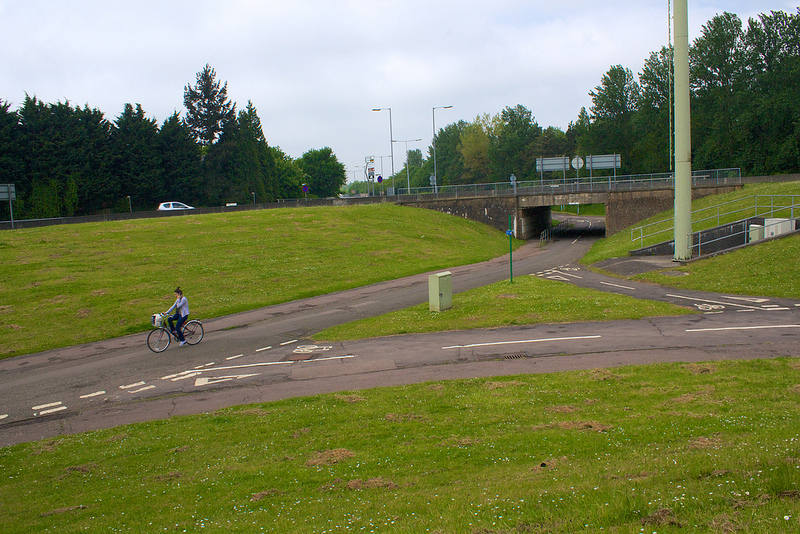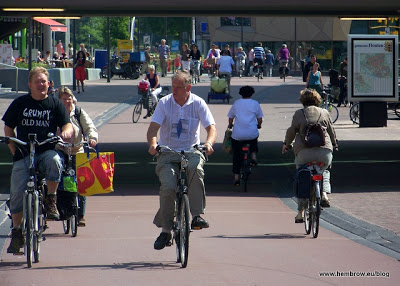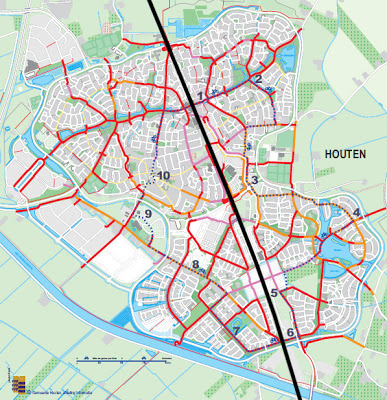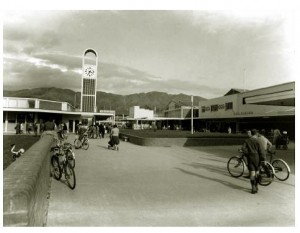
When most Anglophones hear the words “New Town” they usually think of Milton Keynes or, if they are very knowledgeable, Stevenage. Some may disagree, but in general the New Towns of the UK are not considered a great success but there are mixed results.
The New Towns become even more disappointing when assessed from a cycling point of view and doubly so when it is taken into account that these towns, Stevenage in particular but also Milton Keynes, were designed by their planners to encourage cycling. When you see the cycling infrastructure in Stevenage and look at its cycling modal share (around 2%, the UK average) it shows that more is needed to make cycling a viable option. When assessing this we also need to keep in mind that the Dutch ownership of cars per capita is slightly higher than the UK, so this is not a question of car ownership but car usage (Note: NZ is number 8 on that list while the Netherlands and the UK are 32 and 34 respectively).

I wanted in particular to draw a comparison between Stevenage and Houten, a Dutch New Town constructed 10kms from Utrecht around a small existing village. Unlike Milton Keynes, Stevenage was designed with the cycle paths as integrated features, not add ons at the last minute. Also the designer, Eric Claxton, was an avid utility cyclist and based all his ideas for the cycle infrastructure off the latest Dutch standards of the time.
Despite that Stevenage has a modal share of less than 3%, while Houten’s was at around 44% in 2002 (and may be higher now). The difference is that the city has been designed with the assumption that cycling is the main mode of transport that people will use. Travelling into the centre of Houten by car involves using indirect routes and parking (especially on street parking) is scarce. As a result the city centre is quiet and safe, while the residents can easily use their car for what it is really good at, intercity travel using a system of excellent motorways.

Cycle parking is also very good in Houten, especially at the Transferium in the train station. In Houten, 60% of rail travellers arrive at the station by bicycle when the average in the Netherlands is 40%. The town was built around an existing train station which has actually been moved to make it more efficient. When the town was expanded (it is a very desirable option, especially for Utrecht residents) another train station was built further south.
So how is this relevant for New Zealand (beside the obvious fact that Houten is a good example of how cycling can succeed in a modern town)? Well many people are suggesting that satellite towns be built to alleviate some of the population pressure on Auckland. I would be fully supportive of this if those towns were a vision of something different, cycling and rail towns built on the Houten model. After all, that was the vision for New Zealand before the 1949 National government scrapped the expansion of Wellington’s successful rail oriented suburban developments to Auckland and Christchurch.

Instead of course, we are more likely to get towns like Marsden City, where cars dominate, there is no rail link and cycling is just part of the green washing. Cycling will be a recreational activity to be enjoyed once you have unloaded the bikes from the SUV. In other words, business as usual for autodependent New Zealand.



